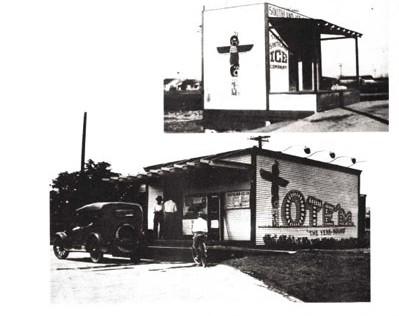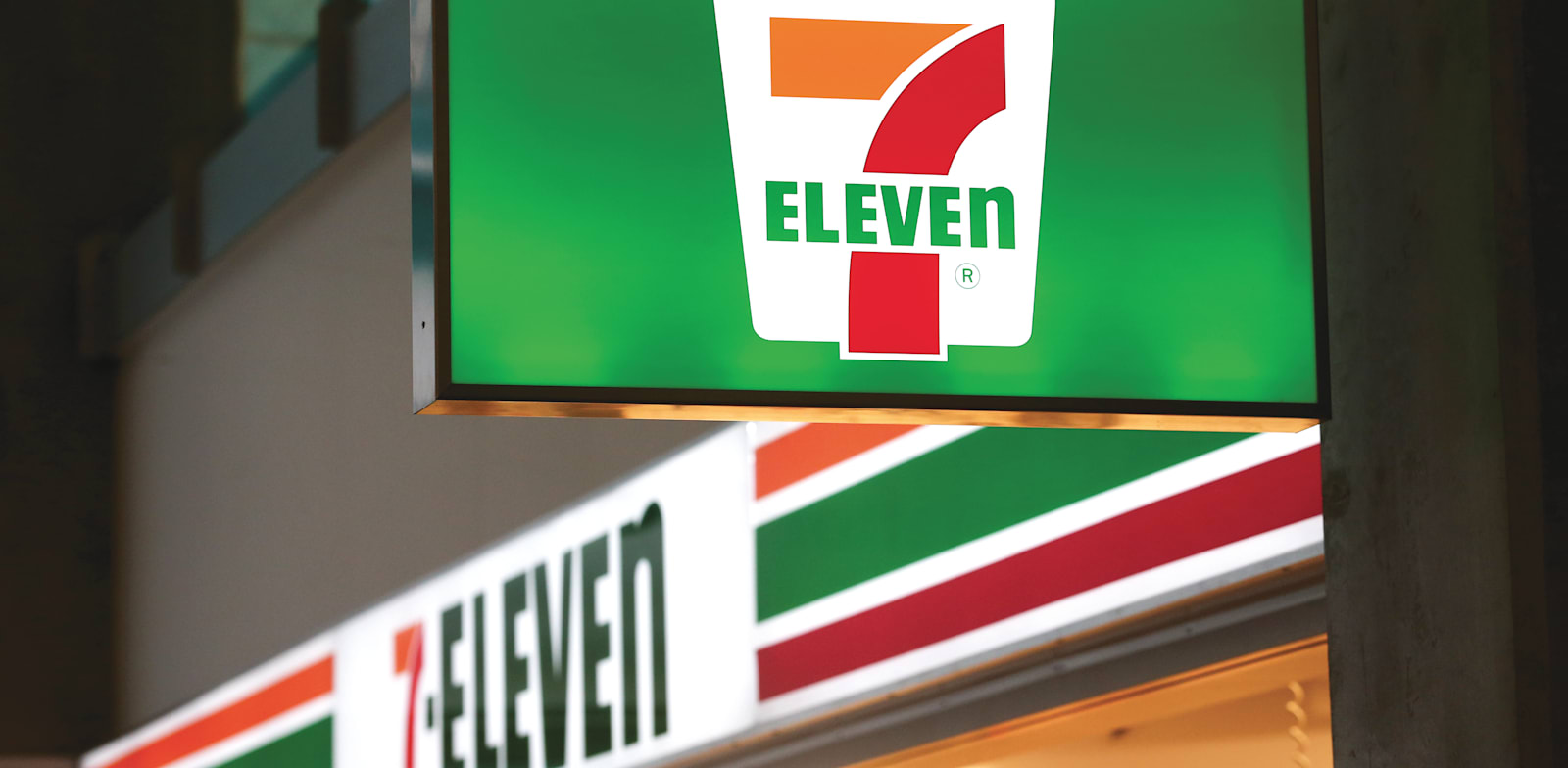7-Eleven is a global convenience store chain that originated in the United States and has expanded to become one of the largest and most recognizable brands in the industry. The company operates a network of retail stores that provide a wide range of products and services, catering to customers’ needs for convenience, accessibility, and quick purchases.
The first 7-Eleven store opened in 1927 in Dallas, Texas, under the name “Tote’m.” It later adopted the name “7-Eleven” to reflect its groundbreaking operating hours of 7 a.m. to 11 p.m., which were considered extended hours at the time. The concept of longer hours quickly gained popularity, and over time, 7-Eleven transformed into a 24/7 operation, allowing customers to access products at any time of the day or night.
7-Eleven stores are strategically located in various settings, such as urban areas, residential neighborhoods, transportation hubs, and commercial centers. This strategic placement ensures that customers can easily find a store nearby and conveniently access essential items whenever needed. The company has expanded globally, with a presence in numerous countries across Asia, North America, Europe, and beyond.
The key characteristic of 7-Eleven is its emphasis on customer convenience. By operating 24/7, 7-Eleven enables customers to shop at their convenience, whether it’s grabbing a morning coffee, purchasing snacks during a late-night craving, or picking up everyday essentials on the way home from work. The stores are designed to provide quick and efficient service, allowing customers to make purchases swiftly and easily.
The product offerings at 7-Eleven are diverse and tailored to meet the needs and preferences of local customers. Customers can find a wide array of items, including beverages, snacks, ready-to-eat meals, groceries, personal care products, household items, and more. The selection may vary by location, reflecting the cultural and regional preferences of the customer base. Additionally, many 7-Eleven stores offer services like ATMs, bill payment options, money transfers, and some even have fuel stations.
7-Eleven continuously embraces technology to enhance the customer experience. The company has implemented self-checkout kiosks, mobile payment options, and digital initiatives to streamline transactions and provide personalized offers and promotions to customers. This integration of technology helps create a seamless and efficient shopping experience for patrons.
Furthermore, 7-Eleven operates using a franchise model, with the majority of its stores being independently owned and operated by franchisees. This model allows entrepreneurs to leverage the established 7-Eleven brand, benefit from the company’s support, supply chain, and marketing resources, and tap into a proven business model. Franchisees play a vital role in expanding the 7-Eleven network and providing local expertise and service to customers.
In recent years, 7-Eleven has expanded beyond traditional convenience stores. The company has introduced smaller-format stores in certain locations to cater to urban settings or areas with limited space. Additionally, 7-Eleven has embraced new product categories and partnerships to offer a wider range of options, including healthier food choices, specialty items, and exclusive collaborations with popular brands.
Glorious History of 7-Eleven
The history of 7-Eleven dates back to 1927 when the first store opened in Dallas, Texas. The original store was named “Tote’m” and operated as an ice house where customers could purchase blocks of ice to keep their perishable goods cold. The store also sold basic groceries and items like milk, eggs, and bread.

In 1928, the store was renamed to “7-Eleven” to reflect its extended operating hours from 7 a.m. to 11 p.m., which was an innovative concept at the time. The longer hours allowed customers to conveniently purchase goods beyond the typical retail hours.
During the 1940s, the Southland Ice Company, the parent company of 7-Eleven, began to transition its stores into convenience stores. The focus shifted from selling ice to providing a wide range of products to meet the needs of customers seeking convenience and quick purchases. The stores expanded their offerings to include grocery items, household essentials, and other convenience goods.
In the 1950s, 7-Eleven implemented a new concept called “take-a-number,” which allowed customers to take a numbered ticket and wait for their turn to be served at the counter. This innovation helped improve service efficiency and reduce waiting times, contributing to the convenience factor for customers.
The 1960s marked a significant milestone for 7-Eleven as it introduced its first self-service gasoline station in Oklahoma. This move expanded the company’s offerings beyond just convenience store items and positioned 7-Eleven as a destination for fuel and convenience.
In the 1970s, 7-Eleven expanded its operations globally, opening its first international store in Canada. The company continued to grow and establish a presence in other countries, including Japan, Taiwan, Thailand, and various European nations. This expansion laid the foundation for 7-Eleven to become a truly global brand.
In the 1980s, 7-Eleven introduced the concept of “Fresh to Go,” offering customers freshly prepared food and beverages within the stores. This marked a shift towards providing more ready-to-eat meals and fresh options, catering to changing consumer preferences for convenience and quick meals.
In 1991, the parent company, Southland Corporation, filed for bankruptcy. As a result, 7-Eleven became a subsidiary of Ito-Yokado, a major Japanese retail conglomerate. Under the new ownership, 7-Eleven continued its expansion in Japan and other Asian markets.
In the 2000s, 7-Eleven expanded its footprint in the United States through acquisitions. The company acquired several regional convenience store chains, consolidating its presence and strengthening its position as the leading convenience store brand in the country.
In recent years, 7-Eleven has focused on embracing technology and enhancing the customer experience. The company introduced self-checkout kiosks, mobile payment options, and loyalty programs to streamline transactions and provide personalized offers to customers. They have also expanded their product offerings to include healthier food options, specialty items, and exclusive collaborations with popular brands.
Today, 7-Eleven is a global convenience store chain with thousands of stores operating in countries around the world. The company continues to innovate, adapt to changing consumer demands, and provide customers with convenient access to a wide range of products and services 24/7.
Business Segments of 7-Eleven
7-Eleven operates through various business segments, each offering different products and services to cater to the diverse needs of its customers. The primary business segments of 7-Eleven include:
Convenience Stores: The core business of 7-Eleven revolves around convenience stores. These stores provide customers with a wide range of products that are easily accessible and available 24/7. The product offerings include snacks, beverages, groceries, fresh food items, ready-to-eat meals, personal care products, household essentials, and more. Convenience stores are strategically located in urban centers, residential areas, transportation hubs, and commercial districts to maximize convenience and accessibility for customers.
Fuel Retailing: Many 7-Eleven stores also feature fuel stations, offering customers the convenience of refueling their vehicles while making their regular purchases. Fuel retailing is an important business segment for 7-Eleven, providing customers with a one-stop destination for both fuel and convenience store products. This segment allows 7-Eleven to attract motorists who need to refuel and simultaneously purchase items from the store.
Financial Services: 7-Eleven offers a range of financial services to customers, such as ATMs and bill payment services. Many 7-Eleven stores have ATMs installed, allowing customers to withdraw cash or perform other banking transactions conveniently. Additionally, customers can pay bills for utilities, telecommunications, credit cards, and other services at designated bill payment counters within 7-Eleven stores.
Money Transfers: Certain 7-Eleven stores provide money transfer services, enabling customers to send and receive money domestically and internationally. These services facilitate remittances and money transfers between individuals, offering a convenient and reliable solution for customers who need to transfer funds quickly and securely.
Foodservice and Fresh Foods: 7-Eleven has expanded its foodservice offerings to cater to customers’ demand for quick and fresh meals. The company provides a variety of freshly prepared food items within its stores, including sandwiches, salads, sushi, hot dogs, pizza, pastries, and other grab-and-go options. The foodservice segment allows customers to conveniently purchase ready-to-eat meals and snacks during their visits to 7-Eleven stores.
Franchise Operations: Franchise operations play a significant role in 7-Eleven’s business model. The company operates under a franchise system, allowing entrepreneurs to own and operate 7-Eleven stores independently. Franchisees benefit from the established brand, operational support, supply chain management, marketing resources, and training provided by 7-Eleven. This business segment enables 7-Eleven to expand rapidly and increase its store network through partnerships with local entrepreneurs.
Digital and Technology Initiatives: In recent years, 7-Eleven has invested in digital and technology initiatives to enhance the customer experience. The company has introduced mobile applications, self-checkout kiosks, mobile payment options, and loyalty programs to streamline transactions and provide personalized offers to customers. These digital initiatives aim to create a seamless and convenient shopping experience for customers, integrating technology into various aspects of the business.
These different business segments collectively contribute to 7-Eleven’s success as a leading global convenience store chain. By offering a diverse range of products, services, and business models, 7-Eleven strives to meet the evolving needs of customers and provide them with convenient solutions for their everyday needs.
Financials of 7-Eleven over the years
Here is a detailed overview of 7-Eleven’s financials over the years:
Revenue: 7-Eleven’s revenue has grown steadily over the years, from $73.4 billion in 2010 to $87.6 billion in 2022. This growth has been driven by a number of factors, including the expansion of the company’s store network, the introduction of new products and services, and the growth of e-commerce.
Operating income: 7-Eleven’s operating income has also grown steadily over the years, from $2.4 billion in 2010 to $3.7 billion in 2022. This growth has been driven by the company’s focus on efficiency and cost-saving measures.
Net income: 7-Eleven’s net income has also grown steadily over the years, from $1.7 billion in 2010 to $2.9 billion in 2022. This growth has been driven by the company’s strong revenue and operating income growth.
Earnings per share: 7-Eleven’s earnings per share have grown steadily over the years, from $1.00 in 2010 to $1.60 in 2022. This growth has been driven by the company’s strong revenue and net income growth.
In addition to these financial metrics, 7-Eleven has also been recognized for its strong corporate governance practices. In 2022, the company was named to the Dow Jones Sustainability World Index for the 15th consecutive year. This index is a global benchmark of sustainability performance for publicly traded companies.
Overall, 7-Eleven has a strong financial performance and a commitment to corporate governance. These factors make the company a good investment for shareholders.
Here are some additional details about 7-Eleven’s financials:
- Debt: 7-Eleven’s debt has increased over the years, from $1.8 billion in 2010 to $2.7 billion in 2022. This increase has been driven by the company’s expansion of its store network and the acquisition of other companies.
- Cash flow: 7-Eleven’s cash flow has been strong over the years, with free cash flow (FCF) exceeding $1 billion in each of the past five years. This strong cash flow has allowed the company to invest in its business and return capital to shareholders.
- Dividends: 7-Eleven has paid a quarterly dividend to its shareholders for over 50 years. The company has increased its dividend every year since 2010.
Overall, 7-Eleven has a strong financial position and a history of financial stability. The company is well-positioned for continued growth in the years to come.
Growth Strategy of 7-Eleven – How is 7-Eleven so successful?
Its growth strategy focuses on expanding its store network, enhancing its product and service offerings, and leveraging technology to improve operational efficiency. Here are the key elements of 7-Eleven’s growth strategy:
Store Expansion: 7-Eleven aims to increase its store count by opening new locations and acquiring existing stores. The company identifies high-traffic areas and strategic locations, such as urban centers, transportation hubs, and residential neighborhoods, to establish new stores. It may also target markets with limited convenience store penetration, both domestically and internationally, to drive expansion.
Franchise Model: 7-Eleven primarily operates under a franchise model, which allows the company to leverage local entrepreneurs’ knowledge and expertise. Franchisees invest in opening and operating 7-Eleven stores while benefiting from the company’s established brand, supply chain, marketing support, and operational systems. This approach enables rapid expansion while minimizing capital requirements for 7-Eleven.
Product and Service Innovation: To attract and retain customers, 7-Eleven continuously introduces new and innovative products and services. It regularly refreshes its product offerings, including snacks, beverages, ready-to-eat meals, and other convenience items, to align with changing consumer preferences. 7-Eleven also focuses on expanding its private label brands to offer exclusive and competitively priced products.
Digital Transformation: 7-Eleven recognizes the importance of technology in enhancing customer experience and operational efficiency. It invests in digital solutions, such as mobile apps, online ordering, and delivery platforms, to provide convenience and flexibility to customers. The company has implemented initiatives like mobile payment systems, loyalty programs, and personalized marketing campaigns to improve customer engagement and retention.
Partnerships and Acquisitions: 7-Eleven actively seeks partnerships and acquisitions to expand its presence and diversify its offerings. Strategic collaborations with other companies, such as fuel retailers, restaurants, and third-party delivery services, allow 7-Eleven to tap into new customer segments and leverage synergies. Acquiring smaller convenience store chains or independent stores enables 7-Eleven to rapidly expand its footprint in specific regions or markets.
International Expansion: 7-Eleven has a significant focus on expanding its international presence, especially in regions with favorable market conditions and growth opportunities. The company adapts its store formats and product offerings to suit local preferences while maintaining its core brand identity. International expansion allows 7-Eleven to benefit from economies of scale, global brand recognition, and increased revenue streams.
Operational Efficiency: 7-Eleven constantly strives to improve operational efficiency and profitability. It leverages technology and data analytics to optimize inventory management, supply chain logistics, and store operations. This focus on efficiency enables cost savings, better product availability, and faster response to changing consumer demands.
Overall, 7-Eleven’s growth strategy combines aggressive store expansion, product and service innovation, digital transformation, strategic partnerships, and international expansion. By leveraging its franchise model, embracing technology, and adapting to local markets, 7-Eleven aims to strengthen its position as a leading global convenience store chain.
Also Read: Hitting The Bullseye : Target Corp Trailblazing Journey in Retail
Marketing Strategies of 7-Eleven
7-Eleven employs various marketing strategies to promote its brand, attract customers, and drive sales. Here are the key elements of 7-Eleven’s marketing strategies:
Brand Positioning: 7-Eleven positions itself as a convenient and accessible destination for customers’ everyday needs. The brand emphasizes its 24/7 operating hours, wide product selection, and convenient store locations to differentiate itself from competitors. Through consistent messaging, 7-Eleven reinforces its brand image as a trusted and reliable convenience store chain.
Targeted Marketing Campaigns: 7-Eleven utilizes targeted marketing campaigns to reach specific customer segments and drive engagement. By analyzing customer data and preferences, the company tailors its campaigns to match the interests and needs of different demographics. This includes localized promotions, discounts, and exclusive offers to appeal to specific markets and customer profiles.
Digital Marketing and Social Media: 7-Eleven leverages digital channels and social media platforms to connect with customers and create brand awareness. The company maintains an active online presence through its website, mobile app, and social media accounts. It utilizes these platforms to engage with customers, provide updates on new products or promotions, and encourage user-generated content through contests and giveaways.
Loyalty Program: 7-Eleven operates a loyalty program called 7Rewards, which rewards customers for their purchases. The program offers points for every transaction, which can be redeemed for free products, discounts, or exclusive rewards. The loyalty program incentivizes repeat purchases, encourages customer retention, and provides valuable data for personalized marketing initiatives.
Product Promotions and Partnerships: 7-Eleven regularly promotes its products through in-store displays, signage, and promotional materials. It highlights new product launches, limited-time offers, and exclusive partnerships with popular brands. Collaborations with well-known food and beverage companies, such as Coca-Cola or Nestlé, help create excitement and attract customers seeking familiar and trusted brands.
Community Engagement: 7-Eleven emphasizes community engagement as part of its marketing strategy. The company sponsors local events, charities, and sports teams to connect with the communities where its stores are located. This involvement builds positive brand associations and fosters a sense of loyalty among customers.
Convenience Services: In addition to traditional convenience store offerings, 7-Eleven markets its range of convenience services to customers. These services include money transfers, bill payments, ATM access, and parcel delivery. By highlighting these additional services, 7-Eleven aims to position itself as a one-stop solution for customers’ needs beyond simple retail purchases.
Seasonal and Holiday Campaigns: 7-Eleven capitalizes on seasonal and holiday events to create themed marketing campaigns. For example, during the summer, the company promotes refreshing drinks and snacks for outdoor activities, while during holidays, it offers special promotions and limited-edition products. These campaigns capitalize on the festive spirit and create a sense of urgency and excitement among customers.
Market Research and Data Analysis: 7-Eleven invests in market research and data analysis to understand customer behavior, preferences, and market trends. This data-driven approach helps identify opportunities for targeted marketing campaigns, product innovation, and store optimization. By analyzing customer feedback and sales data, 7-Eleven can make informed decisions to improve customer satisfaction and drive sales.
Overall, 7-Eleven’s marketing strategies revolve around brand positioning, targeted campaigns, digital marketing, loyalty programs, product promotions, community engagement, convenience services, seasonal campaigns, and data analysis. These strategies work together to create brand awareness, drive customer engagement, and foster customer loyalty in a competitive convenience store market.
To read more content like this, subscribe to our newsletter



